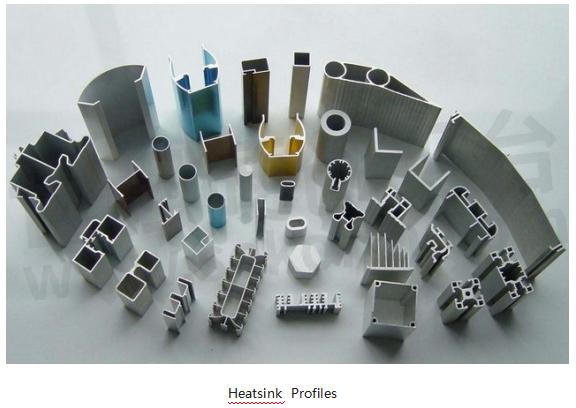Thermal Design Challenges and Heatsinks Manufacturing

The trend towards miniaturization of electronic devices is increasing, while the demand for more functions and higher performance further drives the reduction of external dimensions at various packaging levels, resulting in a rapid increase in power density.

The miniaturization of equipment originally stems from cost reduction considerations. Cooling solutions directly increase the weight, volume, and cost of the product without any functional benefits, but they provide product reliability.
Controlling component temperature within a specified range is a common standard for determining the acceptable level of a design, and effective heat dissipation is crucial for the stable operation and long-term reliability of electronic products.
On the one hand, the result of device miniaturization is a decreasing design margin and a lower tolerance for over design. On the other hand, the overall trend of miniaturization has given rise to increasingly messy and complex geometric models, deepening the close integration of mechanical and electronic components in products. As a result, the flow space is greatly compressed, limiting the range of convective heat dissipation and making the structure of the core material of thermal design - the radiator - more complex.
Heat sink is the most commonly used heat dissipation strengthening component in electronic device thermal design. Its strengthening principle is to increase the heat exchange area. When designing, it is generally necessary to consider the heat flux density of the heat source, the temperature requirements of the heating components, the internal space size of the product, the installation and appearance design of the heat sink, and other requirements.
The performance of a heasink is influenced by many factors such as material, geometric dimensions, bottom flatness, thermal resistance, surface treatment, installation and fastening methods, and working environment temperature and humidity.
Heatsink material
The materials used for heatsinks mainly include aluminum, aluminum alloy, copper, iron, etc. Aluminum is the most abundant metal element stored in nature, with light weight, strong corrosion resistance, and high thermal conductivity, making it very suitable as a raw material for radiators. Adding some metals to aluminum to form aluminum alloys can significantly improve the hardness of the material. Graphite has the conductivity and thermal conductivity of metallic materials, as well as the plasticity similar to organic plastics, and is further applied in fields such as electronics, communication, and lighting.

2. Heatsink manufacturing process
The processing technology of radiators mainly includes CNC, aluminum extrusion, shovel teeth, slotting teeth, etc.
Aluminum extrusion: The aluminum extrusion heat sink heats the aluminum ingot to around 460 ℃, and under high pressure, allows semi-solid aluminum to flow through an extrusion mold with grooves, extruding the initial shape of the heat sink, and then cutting and further processing. The aluminum extrusion process cannot accurately ensure the flatness and other dimensional requirements of the radiator, so further processing is usually required in the later stage.
Shovel teeth: Shovel teeth are used to cut and straighten long strip shaped metal sheets (usually aluminum or copper alloys) at a certain angle using a shovel tooth machine, and repeat cutting to form a consistently arranged fin structure. Compared to extrusion technology, the advantage of shovel teeth is that they can process heat sinks with higher fin density and higher tooth height ratio.
Splitting: The processing of slotting heat sink involves inserting the teeth into the heat sink substrate, and connecting the teeth to the substrate through methods such as adhesive welding, brazing, or extrusion; The connection between the teeth and the base of the toothed radiator is very important. If not handled properly, it may form a certain contact thermal resistance, which affects the heat dissipation performance of the toothed radiator.

3. Surface treatment of heatsinks
Aluminum alloys are prone to oxidation in the air (forming an alumina film), but this natural oxide layer is not dense, has weak corrosion resistance, and is prone to contamination; Based on the requirements of aesthetics, corrosion resistance, and improved heat dissipation performance, metal radiators need to undergo surface treatment. Common surface treatment processes include anodizing, sandblasting, chemical nickel plating, and baking paint.
Anodization: The principle of anodizing is essentially water electrolysis, which involves placing aluminum or aluminum alloy as the anode in a dielectric solution and using electrolysis to form an aluminum oxide film on its surface. This process is called anodizing treatment of aluminum or aluminum alloy; After anodizing, the surface emissivity of the radiator will increase, and the heat dissipation ability of the thermal radiation will be enhanced; Anodizing can maintain or change the color of aluminum & aluminum alloys, and black anodizing is commonly used for heat sinks.
Sandblasting: Sandblasting refers to the process of using compressed air as the power and utilizing the impact of high-speed sand flow to clean and roughen the surface of a radiator; By impacting and cutting the surface, this process can not only remove all dirt such as rust on the surface of the radiator, but also exhibit a uniform and consistent metallic luster on the product surface.
Electroless nickel plating: Chemical nickel plating is a process of depositing nickel alloys from aqueous solutions onto the surface of objects; Its characteristics include high surface hardness, good wear resistance, uniform and beautiful coating, and strong corrosion resistance; Due to the inability of copper and aluminum to be directly soldered, both require chemical nickel plating before using processes such as soldering.
Baking paint: Baking paint is a high-performance special coating called Teflon added to the surface of a heat sink at high temperatures (280℃~400℃), which has the characteristics of non adhesion, heat resistance, moisture resistance, wear resistance, corrosion resistance, etc.
Compared to traditional spray painting techniques, baking paint has advantages in both aesthetics and thermal conductivity. However, heat pipe assembly heat sinks are prone to expansion and deformation due to high temperatures, so low-temperature baking paint is particularly needed during baking.

As the power to be processed continues to increase, heat sinks begin to be combined with heat pipes, fins and other devices to form higher performance heat dissipation modules, and water-cooled heat sinks with higher heat dissipation efficiency have emerged.
- +1 Like
- Add to Favorites
Recommend
This document is provided by Sekorm Platform for VIP exclusive service. The copyright is owned by Sekorm. Without authorization, any medias, websites or individual are not allowed to reprint. When authorizing the reprint, the link of www.sekorm.com must be indicated.






















































































































































































































































































































































































































































































































































































































































































































































































































































































































